What is Green, Grey, and blue hydrogen services ?
Hydrogen is emerging as a cornerstone of the global energy transition, and our services span across Green, Grey, and Blue Hydrogen solutions to meet diverse industry needs. Green hydrogen represents the cleanest pathway, produced by using renewable energy sources such as solar or wind to power electrolysers that split water into hydrogen and oxygen. This process emits no carbon dioxide, making it the ideal long-term solution for achieving net-zero goals. Green hydrogen can decarbonize hard-to-abate industries such as steel, cement, and fertilizers, while also powering hydrogen fuel cell vehicles and providing clean backup energy for grids and microgrids.
On the other hand, Grey hydrogen is produced from natural gas using steam methane reforming (SMR) or coal gasification, without capturing the resulting CO₂ emissions. While this method is carbon-intensive, it remains the most widely used and cost-effective hydrogen production route today, supplying industries like refineries, petrochemicals, and fertilizers that require large volumes of affordable hydrogen.
Bridging the gap, Blue hydrogen uses the same production methods as grey but integrates carbon capture, utilization, and storage (CCUS) technologies to trap and store emissions, significantly reducing its environmental impact. Together, these three pathways allow us to provide flexible, scalable, and sustainable hydrogen services tailored to both present market realities and future clean energy ambitions.
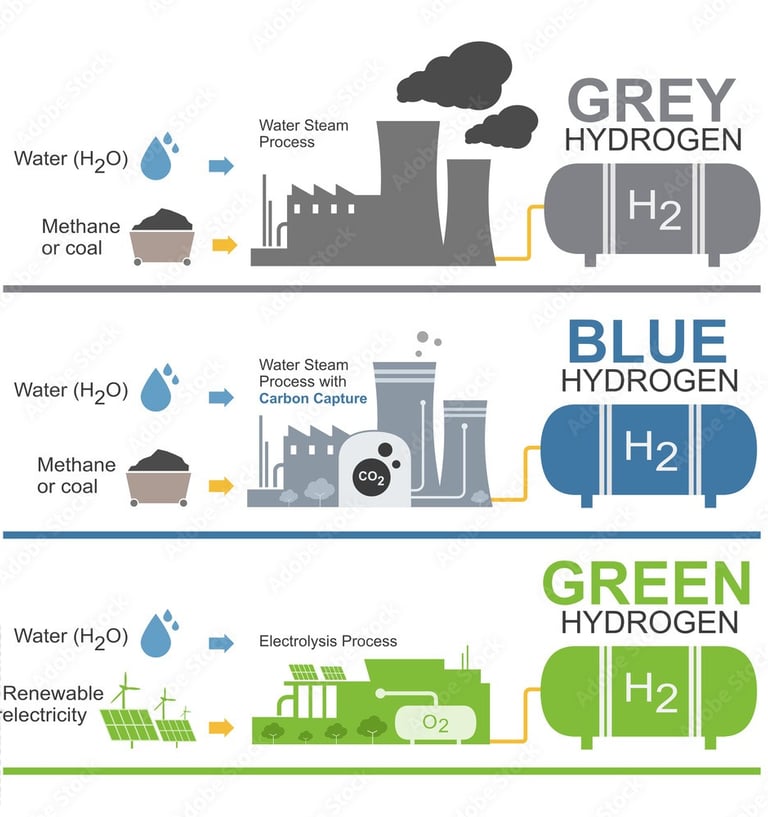

What are the services we provide ?
At Hydrozens.com, we provide comprehensive hydrogen and clean energy solutions designed to meet the needs of today’s industries while building a sustainable future. Our Green Hydrogen services focus on renewable-powered electrolysis, where solar energy drives advanced electrolysers to produce zero-carbon hydrogen. We offer end-to-end solutions, including compression, storage, and safe transport, enabling industries and mobility sectors to adopt hydrogen as a clean fuel. From powering fuel cell vehicles and fleets to decarbonizing fertilizer, steel, cement, and refinery operations, our green hydrogen systems deliver practical pathways to net-zero goals.
In addition, we support industries through Grey Hydrogen services, offering cost-effective production from natural gas or coal gasification. While this pathway involves carbon emissions, it remains the most widely used and affordable hydrogen option today, particularly for refineries, petrochemicals, and fertilizer manufacturers. By providing robust compression, storage, and supply systems, we ensure industries have reliable access to hydrogen while preparing for future transitions to greener solutions.
Beyond production, Hydrozens.com delivers turnkey EPC projects, consulting, feasibility studies, and long-term operations and maintenance services. With a commitment to innovation, safety, and collaboration, we partner with governments, EPC firms, and global industry leaders to provide scalable hydrogen solutions that balance today’s energy demands with tomorrow’s sustainability goals.
Green Hydrogen Services
In our Green Hydrogen services, we harness renewable energy such as solar to power electrolysers that split water into hydrogen and oxygen, producing a clean, zero-carbon fuel. We provide complete solutions including hydrogen production, compression, storage, and safe transport, enabling industries, mobility, and power sectors to adopt sustainable energy systems that support global decarbonization goals.
1. Solar Powered Hydrogen Production
Solar-powered hydrogen production is one of the most sustainable and future-ready methods of generating clean fuel. The process begins with solar photovoltaic (PV) panels that capture sunlight and convert it into renewable electricity. This electricity powers electrolysers, advanced devices that split water into hydrogen and oxygen through a process known as electrolysis. The resulting hydrogen is then compressed and stored for use in various applications, ranging from industrial processes and refineries to mobility solutions such as fuel cell vehicles, buses, and trucks.

The advantage of this approach lies in its zero-carbon footprint—since the electricity used is entirely renewable, the hydrogen produced is classified as green hydrogen, the cleanest form available. It helps replace fossil fuels in energy-intensive sectors like steel, cement, and fertilizers, while also offering a reliable alternative to diesel in backup power systems and microgrids.
At Hydrozens.com, we specialize in designing and delivering end-to-end solar-powered hydrogen systems that include solar panels, electrolysers, compressors, and storage solutions. These systems are modular and scalable, allowing deployment at different scales—from small pilot projects to large industrial hydrogen hubs. By integrating solar power with hydrogen technology, we enable clients to reduce emissions, ensure energy independence, and accelerate their journey toward net-zero sustainability goals.
2. Electrolyzer System & Integration
Electrolyser system integration is at the core of enabling efficient and reliable green hydrogen production. An electrolyser is a device that uses electricity to split water into hydrogen and oxygen through the process of electrolysis. When powered by renewable energy such as solar or wind, it produces green hydrogen, the cleanest and most sustainable form of hydrogen fuel. However, the true value lies in how these electrolysers are integrated into complete systems that meet industrial, mobility, and energy sector needs.
At Hydrozens.com, we provide end-to-end electrolyser integration services, which include system design, engineering, installation, and commissioning. Our solutions connect electrolysers with renewable power sources, water treatment units, hydrogen compression and storage facilities, and downstream applications such as refueling stations or industrial supply lines. We work with multiple electrolyser technologies—including PEM (Proton Exchange Membrane), Alkaline, and Solid Oxide—ensuring the right fit for each project’s requirements.
Our integration services also focus on automation, digital monitoring, and safety systems to maximize efficiency, reliability, and scalability. From small pilot plants to large-scale hydrogen hubs, we design modular systems that adapt to diverse client needs. By integrating electrolysers seamlessly into energy infrastructure, Hydrozens.com helps industries transition from fossil fuels to a sustainable hydrogen-powered future.
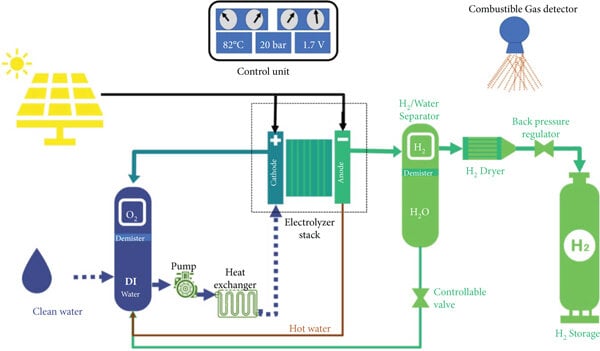

3. Hydrogen Mobility Infrastructure
Hydrogen mobility infrastructure plays a critical role in enabling the widespread adoption of fuel cell vehicles (FCVs) and reducing reliance on fossil fuels in the transportation sector. Unlike conventional fuels, hydrogen can be produced from renewable energy sources and stored efficiently, making it a powerful alternative for achieving zero-emission mobility. To support this transition, a robust infrastructure is required, including hydrogen refueling stations, compression and storage systems, and distribution networks.
At Hydrozens.com, we design and develop solar-powered hydrogen refueling stations that integrate renewable energy, electrolysers, compressors, and storage solutions. These stations provide clean hydrogen fuel for cars, buses, trucks, trains, and even ships, ensuring reliable supply for both public and commercial fleets. Our systems are built to international standards, with a strong focus on safety, efficiency, and scalability, making them suitable for deployment in cities, highways, ports, and airports.
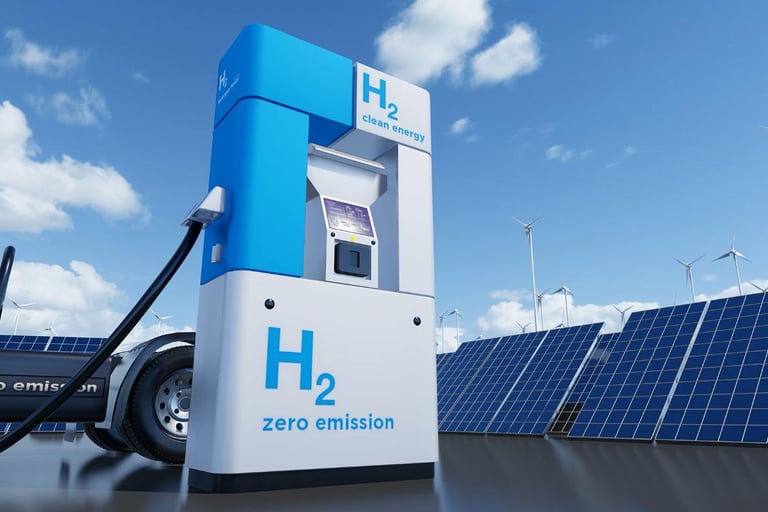

We also collaborate with government agencies, fleet operators, and automotive OEMs to create hydrogen corridors and mobility hubs that accelerate the shift toward sustainable transport. By delivering end-to-end hydrogen mobility infrastructure, Hydrozens.com empowers communities and industries to reduce emissions, improve energy security, and lead the transition to a greener, cleaner transportation future.
4. Industrial Decorbonization Solutions
Industries such as steel, cement, fertilizer, refineries, and chemicals are among the largest contributors to global greenhouse gas emissions. These sectors are often described as “hard-to-abate” because their processes require high heat, hydrogen feedstock, or chemical reactions traditionally dependent on fossil fuels. To meet international net-zero targets, industries need practical pathways to reduce their carbon footprint without compromising productivity or profitability.
At Hydrozens.com, we deliver tailored industrial decarbonization solutions by integrating green hydrogen and advanced energy technologies into existing operations. Our approach replaces fossil fuels and grey hydrogen with renewable hydrogen to support critical processes such as ammonia and fertilizer production, steelmaking, hydrocracking in refineries, and high-temperature heating in cement plants. We also offer solutions for hydrogen blending, on-site hydrogen generation, and retrofitting existing plants with clean energy systems.
Our services cover end-to-end project execution—from feasibility studies and design to installation, operation, and lifecycle maintenance. We collaborate with industrial clients, governments, and technology partners to implement cost-effective and scalable decarbonization pathways.
By combining hydrogen innovation with deep industry expertise, Hydrozens.com enables businesses to cut emissions, enhance energy security, and future-proof their operations—turning sustainability commitments into measurable results and positioning industries as leaders in the clean energy transition.
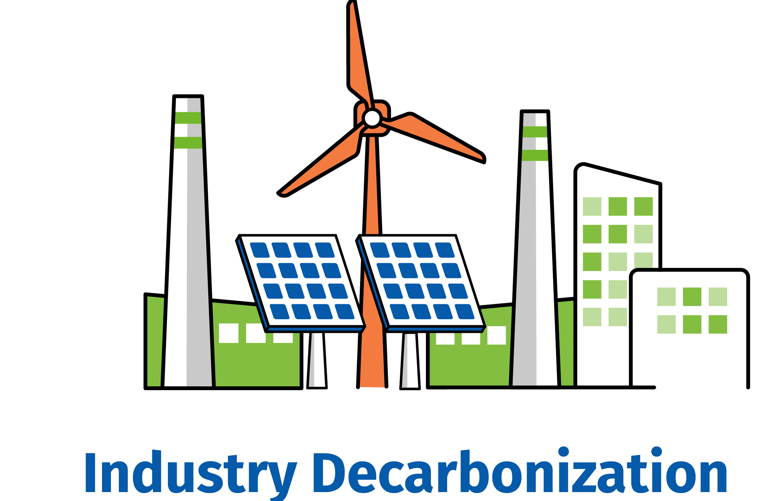

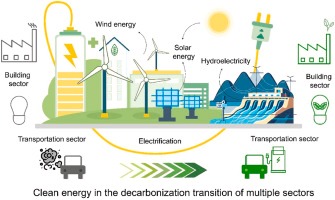



Grey Hydrogen Services
1. Natural Gas Based Hydrozen Production
2. Compression & Storage Systems
3. Industrial Applications
4. Transition Support
Our Grey Hydrogen services focus on delivering reliable and cost-effective hydrogen solutions for industries that require large-scale fuel supply. Produced from natural gas through steam methane reforming (SMR) or coal gasification without capturing CO₂, grey hydrogen is currently the most widely used and affordable form of hydrogen. At Hydrozens.com, we provide complete solutions including hydrogen production systems, compression, storage, and safe distribution to support refineries, fertilizer manufacturers, petrochemical plants, and gas processing facilities. While it is carbon-intensive, grey hydrogen remains vital for meeting present energy demands, and we help clients adopt efficient systems today while preparing for a smooth transition toward cleaner alternatives such as blue and green hydrogen in the future.
Natural gas–based hydrogen production, commonly known as grey hydrogen, is currently the most prevalent method of producing hydrogen for industrial use. The process primarily relies on steam methane reforming (SMR), where natural gas is reacted with steam under high pressure to produce hydrogen and carbon dioxide. In some cases, coal gasification is also used as an alternative feedstock. While this pathway is carbon-intensive due to CO₂ emissions, it remains the most cost-effective and scalable option for industries with large hydrogen demand.
At Hydrozens.com, we specialize in designing and delivering end-to-end natural gas–based hydrogen solutions that include production systems, hydrogen compression, storage, and distribution infrastructure. Our expertise ensures efficient integration with industrial processes such as refineries, fertilizer plants, petrochemicals, and gas processing facilities, where hydrogen is critical for operations like hydrocracking, ammonia production, and feedstock processing.
Although grey hydrogen is not fully sustainable, it plays a vital role in meeting current global energy needs and serves as a foundation for transitioning toward cleaner alternatives. Hydrozens.com also assists industries in developing roadmaps for upgrading to blue hydrogen by integrating carbon capture, utilization, and storage (CCUS) technologies, ensuring clients are prepared for a low-carbon future while maintaining energy reliability today.
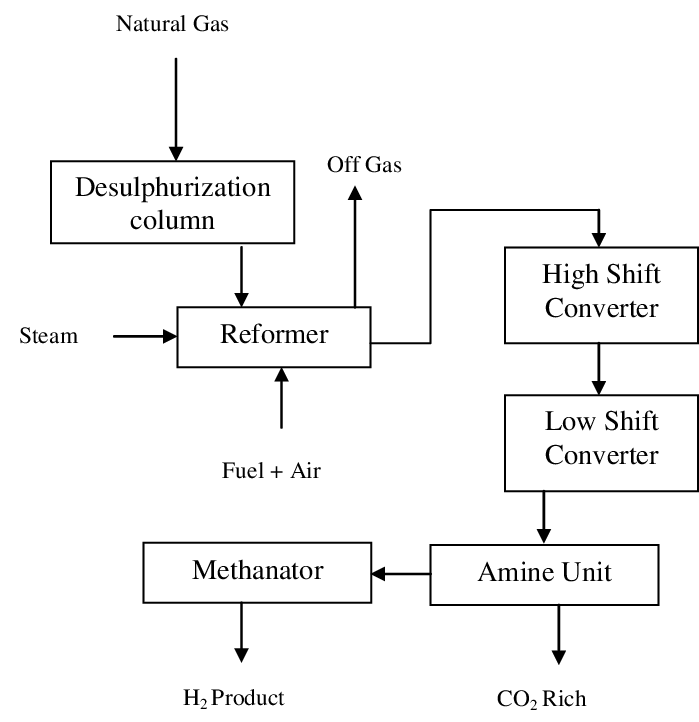

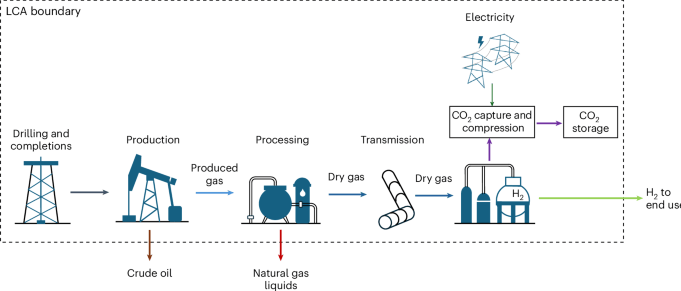

Compression and storage systems play a pivotal role in modern data management, ensuring efficient utilization of resources, faster data access, and reduced operational costs. Compression systems work by reducing the size of data, allowing for optimized storage and quicker transmission across networks. These systems are broadly categorized into lossless and lossy compression. Lossless compression techniques, such as Huffman coding, Run-Length Encoding (RLE), and Lempel-Ziv-Welch (LZW), enable the exact reconstruction of original data, making them suitable for text, code, and sensitive files. Lossy compression, used in multimedia applications like JPEG, MP3, and MPEG, achieves higher reduction by selectively discarding less critical information, balancing storage efficiency and data quality.
Storage systems provide structured mechanisms to store, manage, and retrieve data reliably. They range from high-speed primary storage (RAM) to persistent secondary storage such as SSDs and HDDs, and archival tertiary storage like tapes and optical media. Modern storage architectures, including Direct Attached Storage (DAS), Network Attached Storage (NAS), Storage Area Networks (SAN), and object-based cloud storage, enable scalable, secure, and high-performance solutions. Integration of compression, deduplication, and tiered storage further enhances efficiency, reduces costs, and ensures seamless data accessibility. Together, compression and storage systems form the backbone of enterprise, cloud, and multimedia infrastructures, supporting large-scale data-driven operations.
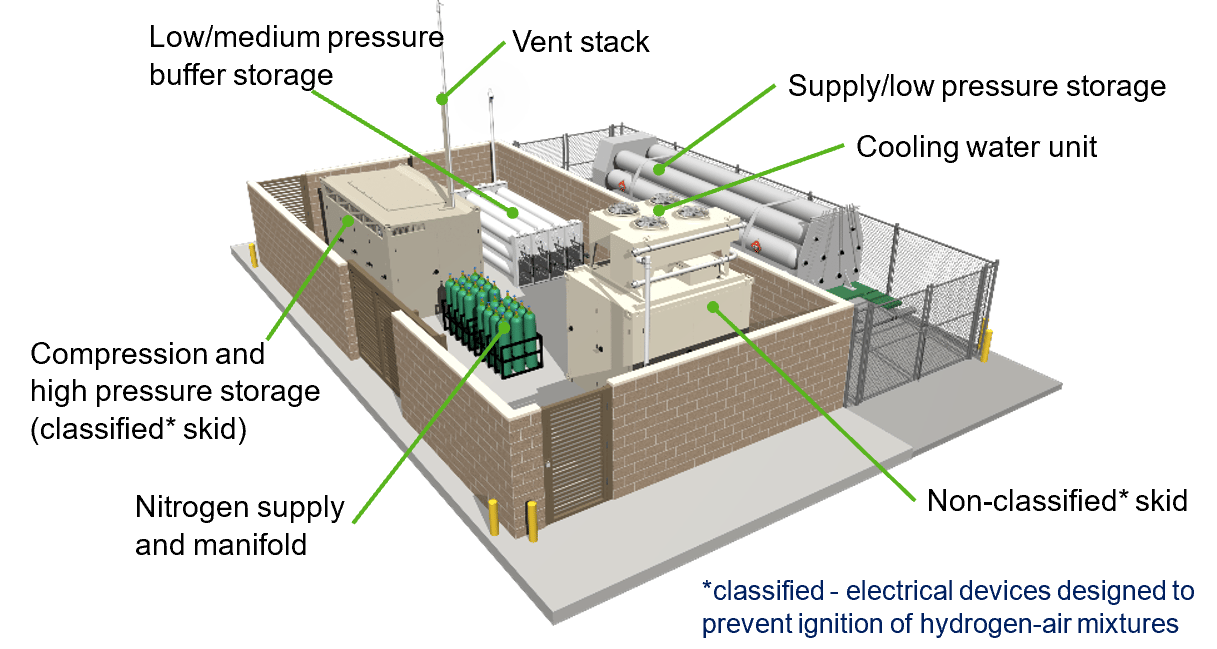

Grey hydrogen, produced from natural gas or coal through steam methane reforming and gasification without carbon capture, is currently the dominant source of hydrogen in global industries. Its low production cost makes it widely used, even though it has a high carbon footprint. The bulk of grey hydrogen output is directed toward large-scale industrial processes where hydrogen is essential as a feedstock or reducing agent.
The single largest industrial application of grey hydrogen is in ammonia production, which consumes more than half of global hydrogen supply. Ammonia, made through the Haber-Bosch process, is a critical input for fertilizers that support global agriculture, as well as for explosives and other chemicals. Without grey hydrogen, current fertilizer production volumes would not be sustainable.
The refining sector is another major consumer, using about a quarter to a third of hydrogen output. Here, hydrogen is vital for hydrocracking and desulfurization processes, which produce cleaner fuels such as low-sulfur diesel and gasoline that comply with environmental regulations. Similarly, methanol production consumes nearly 10% of grey hydrogen, feeding into industries that manufacture plastics, adhesives, resins, and synthetic fuels.
Beyond these, smaller but important applications of grey hydrogen include metallurgical processes, where it acts as a reducing agent for metal ores, and the chemical industry, where it is used to produce compounds like hydrochloric acid, aniline, and hydrogen peroxide. It is also used in specialized sectors such as electronics and glass manufacturing, where it provides a controlled, oxidation-free atmosphere. While these applications remain dependent on grey hydrogen, industries are beginning to transition the same outputs to cleaner blue and green hydrogen pathways to reduce emissions.
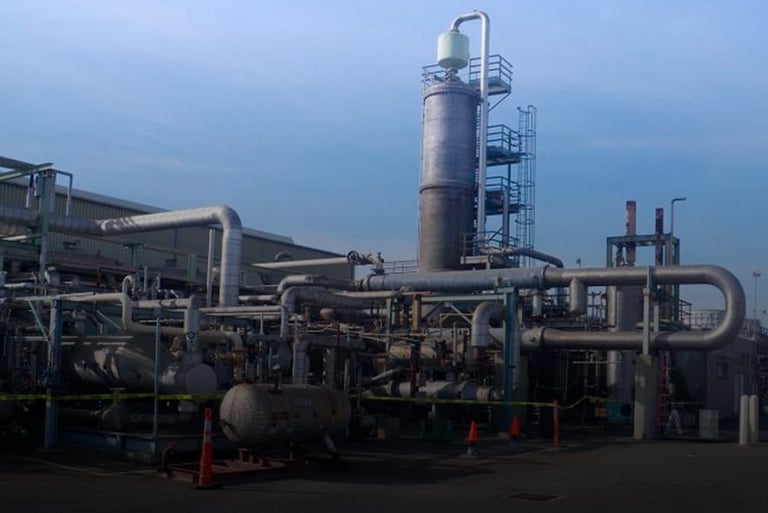





Transition support in the context of green hydrogen and industrial decarbonization refers to the strategies, technologies, and services that help industries move from conventional fossil-fuel-based processes to sustainable, low-carbon operations. This support is critical because industries often face high capital costs, technical uncertainties, and operational challenges when adopting green hydrogen solutions.
Transition support typically begins with feasibility assessments and energy audits to identify processes where hydrogen can replace fossil fuels most effectively, such as in high-temperature heat applications, chemical feedstocks, or mobility fleets. Following this, technology integration services help design and install the required infrastructure, including solar-powered electrolysers, hydrogen storage systems, compressors, and safety systems. These services also include process modification guidance to ensure hydrogen can be used safely and efficiently without disrupting existing production workflows.
Financial and policy support forms another crucial component. Governments and agencies often provide incentives, subsidies, and carbon credits to reduce the economic burden of transitioning. Transition support also includes training and capacity building, equipping plant personnel with the knowledge and skills to operate and maintain hydrogen systems safely and effectively.
Finally, operational and monitoring services ensure the long-term sustainability of the transition. This includes performance monitoring of electrolysers, predictive maintenance of compressors and storage systems, and integration with energy management systems to optimize solar energy usage. Overall, transition support enables industries to adopt green hydrogen smoothly, cost-effectively, and safely, accelerating decarbonization while maintaining operational continuity.
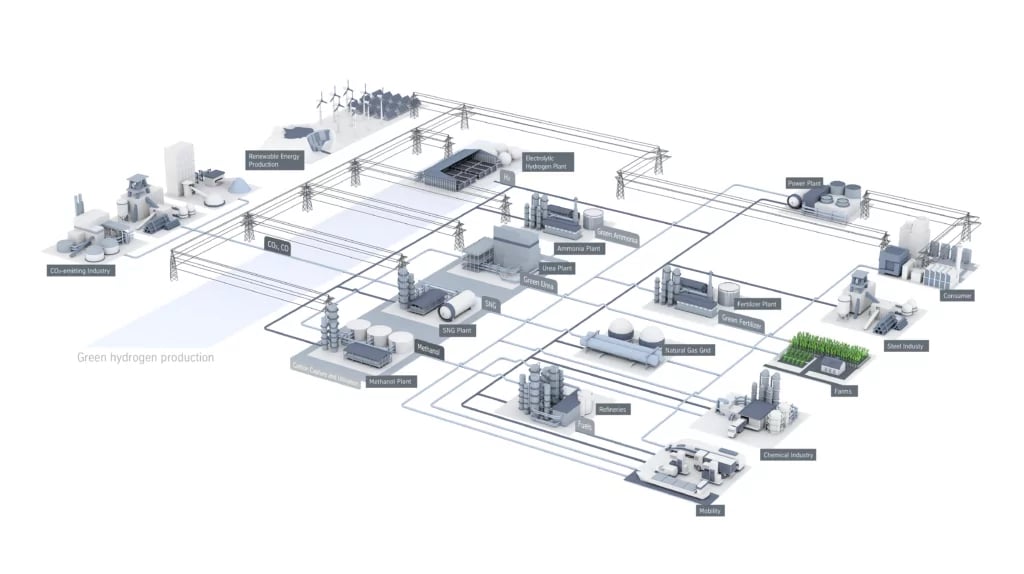

Operation And Maintainance
Operation and maintenance (O&M) of a solar-powered green hydrogen system involves ensuring reliable, safe, and efficient performance of all components, including the PV array, electrolyser, compressors, storage, and ancillary systems. Routine O&M includes monitoring system performance, inspecting and cleaning solar panels, checking water quality for the electrolyser, calibrating sensors, and servicing compressors and storage vessels. Preventive maintenance, timely replacement of consumables like membranes or filters, and adherence to safety protocols minimize downtime and extend equipment life. Advanced O&M may also use SCADA or energy management systems to optimize hydrogen production, manage load variations, and ensure continuous, high-purity hydrogen supply for industrial or mobility applications.
1. Electrolyser Operation & Maintenance
2. Compressor & Storage Maintenance
3. Safety & Environmental Compliance
Electrolyser operation is the heart of a solar-powered green hydrogen system. Its primary function is to split water into hydrogen and oxygen using renewable electricity from solar panels. Effective operation begins with ensuring high-quality feedwater, as impurities such as dissolved salts, silica, or metals can damage membranes and electrodes, reducing efficiency and lifespan. The electrolyser’s electrical input must be managed carefully, matching the variable solar output while maintaining optimal voltage and current for stable hydrogen production. Advanced systems often integrate energy management and SCADA controls to monitor production rates, adjust load dynamically, and optimize energy consumption, ensuring consistent hydrogen purity and yield. Regular monitoring of parameters like hydrogen flow, pressure, temperature, and purity is essential to detect anomalies early and maintain performance within the designed specifications.
Maintenance of the electrolyser focuses on preventing wear and ensuring longevity of critical components. Membranes, electrodes, and catalysts degrade over time and must be inspected periodically. Alkaline or PEM electrolysers require scheduled checks to clean or replace membranes, replace worn seals, and inspect electrical connections for corrosion or overheating. Water treatment systems, including reverse osmosis and deionization units, need routine cleaning and filter replacement to prevent scaling or fouling inside the electrolyser. Additionally, safety systems, such as pressure relief valves, hydrogen sensors, and ventilation, must be tested regularly to protect against leaks, overpressure, or abnormal operating conditions.
Preventive and predictive maintenance strategies are critical for ensuring continuous hydrogen production. Preventive maintenance includes scheduled inspections, cleaning, and component replacements according to manufacturer recommendations. Predictive maintenance leverages real-time monitoring data to anticipate potential failures, such as decreasing efficiency, abnormal temperatures, or pressure fluctuations, allowing technicians to act before a breakdown occurs. Proper documentation of operational parameters, maintenance activities, and performance metrics ensures compliance with industry standards and provides valuable insights for improving system reliability and efficiency.
By focusing on proper operation, rigorous maintenance, and proactive monitoring, electrolyser systems can achieve maximum uptime, optimal efficiency, and safe, high-purity hydrogen production, making them a reliable cornerstone of solar-powered green hydrogen projects.
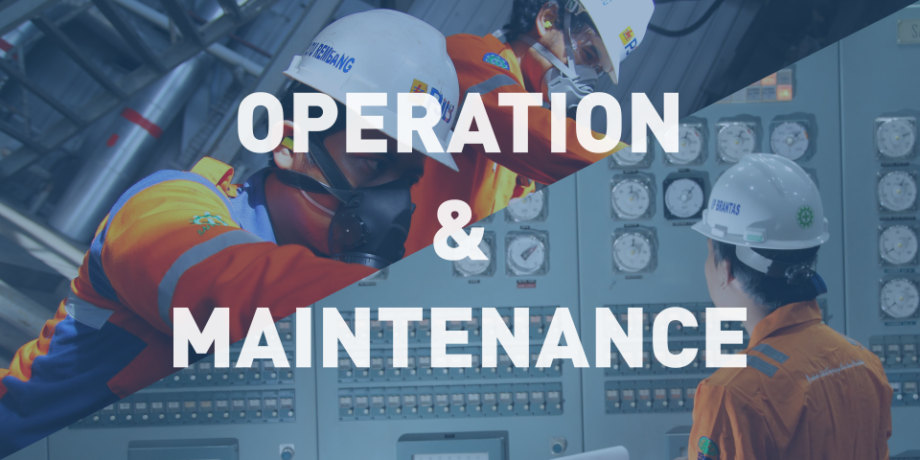

Compressor operation and maintenance are critical for safely pressurizing hydrogen produced by electrolysers and delivering it to storage or end-use systems. Compressors increase the hydrogen pressure to the required level for industrial applications, cylinder storage, or refueling infrastructure. Proper operation begins with monitoring inlet and outlet pressures, flow rates, temperature, and vibration levels to ensure the system functions efficiently. Lubrication, cooling, and alignment of mechanical components must be maintained according to manufacturer specifications to prevent wear and reduce the risk of failure. Integrated control systems often include automatic shutdown and safety interlocks to protect the compressor against overpressure, overheating, or abnormal operating conditions, which are crucial for handling hydrogen safely.
Maintenance of compressors involves both routine inspections and preventive measures. Key tasks include checking for leaks in pipes and seals, inspecting bearings and drive systems, cleaning or replacing filters, and verifying the operation of interstage coolers and separators. Electrical systems, motors, and sensors are also regularly inspected and tested to ensure consistent performance. Predictive maintenance using vibration analysis, thermal imaging, and pressure monitoring can help identify potential mechanical or electrical issues before they lead to downtime. Proper documentation of maintenance activities ensures traceability and supports compliance with safety and regulatory standards.
Hydrogen storage maintenance is equally important for ensuring system safety and reliability. High-pressure cylinders, tube trailers, or composite vessels must be inspected for structural integrity, corrosion, and pressure relief device functionality. Leak detection, regular hydrostatic testing, and adherence to industry codes (such as ISO 19880 or NFPA 2) are essential to prevent accidents. Storage areas should be well-ventilated, with hydrogen sensors and emergency venting systems in place. Regularly reviewing storage conditions, pressure cycles, and system performance helps maintain safe hydrogen containment and ensures a reliable supply for industrial processes or mobility applications.
By implementing comprehensive operation, preventive maintenance, and predictive monitoring for compressors and storage systems, industrial operators can achieve safe, efficient, and continuous hydrogen supply, minimize equipment downtime, and maintain compliance with stringent safety standards.






Safety and environmental compliance are fundamental components of operating a solar-powered green hydrogen system due to hydrogen’s highly flammable nature and the potential hazards associated with high-pressure storage and handling. Effective safety management begins with the implementation of robust detection and prevention systems, including hydrogen sensors, flame arrestors, and ventilation systems to detect and mitigate leaks. Emergency shutdown (ESD) systems and interlocks ensure rapid isolation of the electrolyser, compressors, and storage vessels in case of abnormal conditions, preventing accidents and equipment damage. Personnel working on the system must be trained in safety procedures, including hydrogen handling, leak response, fire suppression, and evacuation protocols, ensuring a culture of safety across the facility.
Environmental compliance involves adhering to local, national, and international regulations regarding emissions, waste management, and resource usage. Since green hydrogen production is a zero-carbon process, operators must ensure that associated activities, such as water treatment and chemical usage, do not negatively impact the environment. Water from reverse osmosis or deionization units must be managed appropriately, and any chemical additives or by-products must be disposed of according to environmental standards. Regular monitoring and reporting of operational parameters, emissions, and safety metrics ensure transparency and adherence to regulatory frameworks, including ISO standards, NFPA codes, and local environmental guidelines.
Routine inspection and preventive measures form the backbone of safety and environmental compliance. Equipment such as pressure relief devices, ventilation systems, and fire suppression mechanisms should be tested and maintained regularly. Leak detection systems, alarms, and monitoring instruments require calibration and verification to ensure accurate operation. Environmental audits and internal compliance reviews help identify potential risks, maintain safe operation, and continuously improve safety procedures.
By integrating comprehensive safety protocols, environmental monitoring, and rigorous compliance practices, operators can achieve a secure, sustainable, and regulation-compliant hydrogen production facility, protecting personnel, equipment, and the surrounding environment while supporting reliable green hydrogen operations.


Hydrozens.com
Innovative solutions for green hydrogen production.
© 2025. All rights reserved.
Reach Out Here
cONTACT MD
cONTACT Vp
cONTACT Enquires
